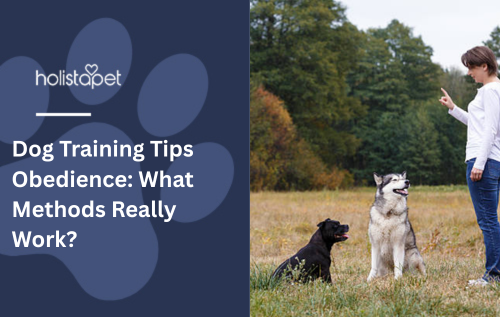Training your dog to follow basic commands and show good manners isn’t just about convenience—it’s about building trust, safety, and a deeper bond between you and your furry friend. Obedience training gives dogs structure, helps prevent behavioral issues, and makes life easier for both pet and owner. But what are the most effective dog training tips for obedience, and how can you put them into practice?
 Why Obedience Training Matters
Why Obedience Training Matters
Obedience training isn’t just teaching your dog to “sit” or “stay.” It’s about creating a strong communication system. A well-trained dog is less likely to develop destructive habits, such as chewing, barking excessively, or pulling on the leash. More importantly, obedience training can keep your dog safe—preventing accidents by responding quickly to your commands.
Top Dog Training Tips for Obedience
1. Start With Basic Commands
Begin with simple, essential commands such as sit, stay, come, and down. Once your dog masters these, you can move to more advanced tricks and behaviors.
2. Use Positive Reinforcement
Reward good behavior with treats, praise, or playtime. Dogs learn faster when they associate following commands with positive outcomes. Avoid harsh punishment—it can cause fear and damage your relationship.
3. Keep Training Sessions Short and Fun
Dogs have short attention spans. Aim for 5–10 minutes per training session, several times a day. End on a positive note so your dog looks forward to the next lesson.
4. Be Consistent
Consistency is the foundation of obedience training. Use the same commands, tone of voice, and rules every time. If you let your dog jump on the couch one day and scold them the next, confusion will set in.
5. Socialize Early
Expose your puppy or dog to different environments, people, and other animals. Socialization helps prevent fear and aggression, which are common obstacles to obedience.
6. Stay Patient and Persistent
Some dogs pick up commands quickly, while others need more time. Stay patient and celebrate small victories along the way.
7. Use Leash Training for Control
A leash isn’t just for walking—it’s also a tool for teaching obedience. Leash training can prevent pulling and help your dog understand boundaries.
 Frequently Asked Questions
Frequently Asked Questions
Q1: When should I start obedience training my dog?
You can start as early as 8 weeks old. Puppies are highly receptive to learning at a young age, but older dogs can also be trained with patience and consistency.
Q2: What’s the most important command to teach first?
The “come” command is vital. It can prevent your dog from running into dangerous situations and ensures you maintain control.
Q3: How long does it take to fully train a dog?
Training is ongoing, but most dogs learn basic obedience within a few weeks of consistent sessions. More advanced training can take several months.
Q4: Can professional training help with stubborn dogs?
Yes. A certified dog trainer can provide personalized strategies, especially if your dog has specific behavioral challenges.
Q5: Should I use treats every time my dog obeys?
Initially, yes. Over time, you can gradually reduce treats and replace them with praise or affection.
Final Thoughts
Obedience training is one of the most rewarding investments you can make for your dog’s happiness and your peace of mind. By practicing consistency, patience, and positive reinforcement, you’ll raise a well-mannered companion who listens and respects your commands.
Helpful Notes
-
Always train in a distraction-free environment before moving to busier spaces.
-
Keep commands short and clear.
-
Celebrate progress, no matter how small.
-
Remember: training isn’t about control—it’s about building trust and teamwork.
With these dog training tips for obedience, you can create a safe, structured, and loving environment where your dog thrives.


 CBD Oil for Dogs - Fast Acting
CBD Oil for Dogs - Fast Acting
 Chicken Flavored CBD Oil For Dogs - Easy Dose
Chicken Flavored CBD Oil For Dogs - Easy Dose
 Salmon Flavored CBD Oil For Dogs - Highly Rated
Salmon Flavored CBD Oil For Dogs - Highly Rated
 CBG Oil for Dogs and Cats - Loved by Thousands
CBG Oil for Dogs and Cats - Loved by Thousands





Leave a comment
All comments are moderated before being published.
This site is protected by hCaptcha and the hCaptcha Privacy Policy and Terms of Service apply.